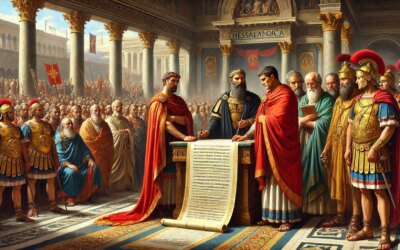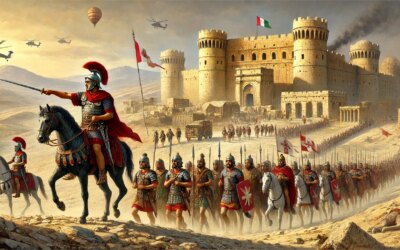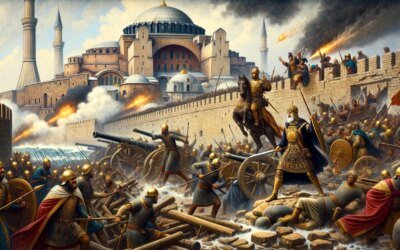Introduction: The Empire Strikes Back at a Rising Faith
In 303 AD, the Roman Emperor Diocletian initiated the most severe and systematic persecution of Christians in the history of the Roman Empire. Known as the Great Persecution, this campaign was set into motion by a series of imperial edicts that sought to suppress and ultimately eradicate Christianity. The policies unleashed an era of violence, martyrdom, and resilience that would deeply shape both the Roman state and the Christian faith.
Background: Christianity’s Growth and Rome’s Anxiety
By the early 4th century, Christianity had spread widely across the empire, from the cities of the East to the rural heartlands of the West. Christians refused to participate in traditional Roman religious rituals, including emperor worship, which led many Roman officials to view them as subversive and disloyal. Despite periods of tolerance, imperial authorities increasingly saw Christianity as a threat to the unity and stability of the empire.
Diocletian’s Vision of Order
Diocletian, who had ruled since 284 AD, undertook sweeping reforms to restore imperial authority. He divided the empire into the Tetrarchy—four co-rulers—and sought to unify the diverse population under traditional Roman values. Influenced by his Caesar Galerius and pagan priests, Diocletian became convinced that the Christian refusal to honor Roman gods endangered divine favor for the empire. His response would be ruthless.
The Edicts of Persecution
The first edict, issued in February 303 AD, ordered the destruction of Christian scriptures and places of worship, banned Christian assemblies, and stripped Christians of legal protections. Further edicts followed, mandating the imprisonment of clergy, forced sacrifices to Roman gods, and executions for those who refused. Across the empire, churches were razed, sacred texts burned, and thousands of Christians arrested and tortured.
Implementation and Resistance
Enforcement of the edicts varied by region and governor. In the Eastern provinces, particularly under Galerius, persecution was brutal and relentless. In the West, under Constantius Chlorus, it was more restrained. Christians responded with a mix of clandestine worship, legal appeals, and, in many cases, courageous martyrdom. Figures like Saint Agnes, Saint George, and Saint Sebastian became enduring symbols of faith under fire.
Impact on Christian Identity
The Great Persecution, though devastating, ultimately strengthened the Christian community. The stories of martyrs were recorded and celebrated, reinforcing a sense of spiritual solidarity and moral triumph. Christian theologians and leaders began to articulate a more defined ecclesiology, and persecution became a central theme in Christian consciousness, echoing the suffering of Christ himself.
The End of the Persecution
After Diocletian’s abdication in 305 AD, the severity of the persecution gradually waned. In 311 AD, Galerius issued the Edict of Toleration, acknowledging the failure of persecution and allowing Christians to practice their faith. Just two years later, Constantine would ascend as the first openly Christian emperor, and by 313 AD, the Edict of Milan legalized Christianity across the empire.
Legacy of the Great Persecution
Though intended to destroy Christianity, the Great Persecution failed to achieve its goals. Instead, it emboldened the faith, refined its identity, and paved the way for its eventual dominance. Diocletian’s attempt to restore Roman religio-political unity backfired, and within a few decades, the persecuted faith would become the empire’s spiritual backbone.
Conclusion: Fire and Faith
The Great Persecution stands as one of the darkest and most formative chapters in early Christian history. Diocletian’s edicts, driven by a vision of imperial order, provoked a spiritual crisis that Christianity not only survived but transcended. In the smoldering ruins of churches and the silent courage of martyrs, a new religious world was being forged—one that would soon transform the Roman Empire from within.






